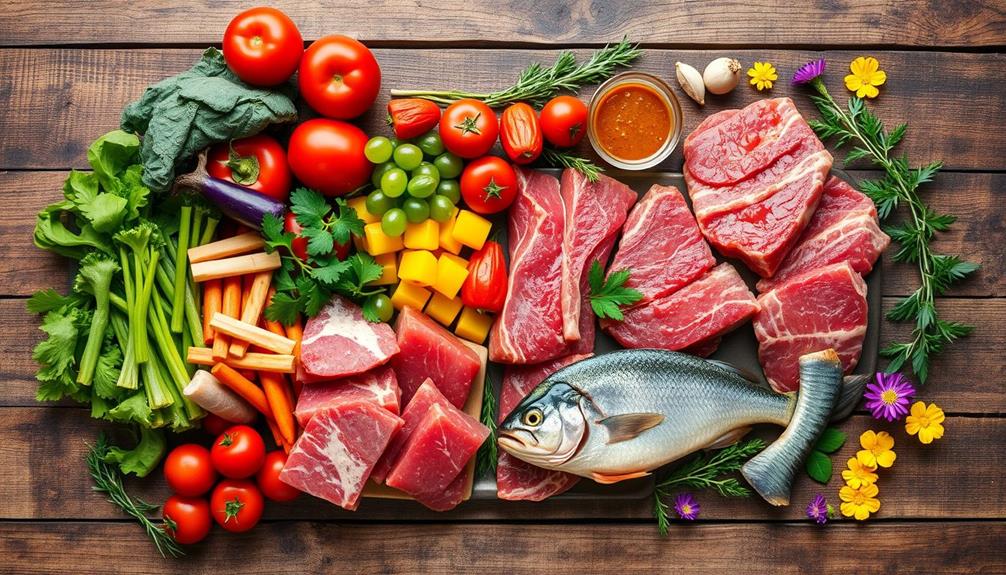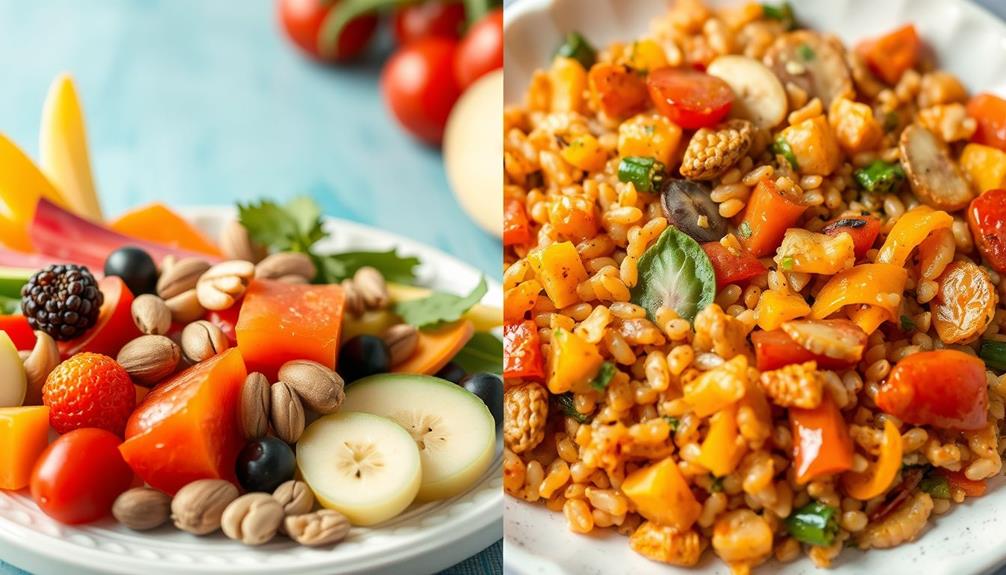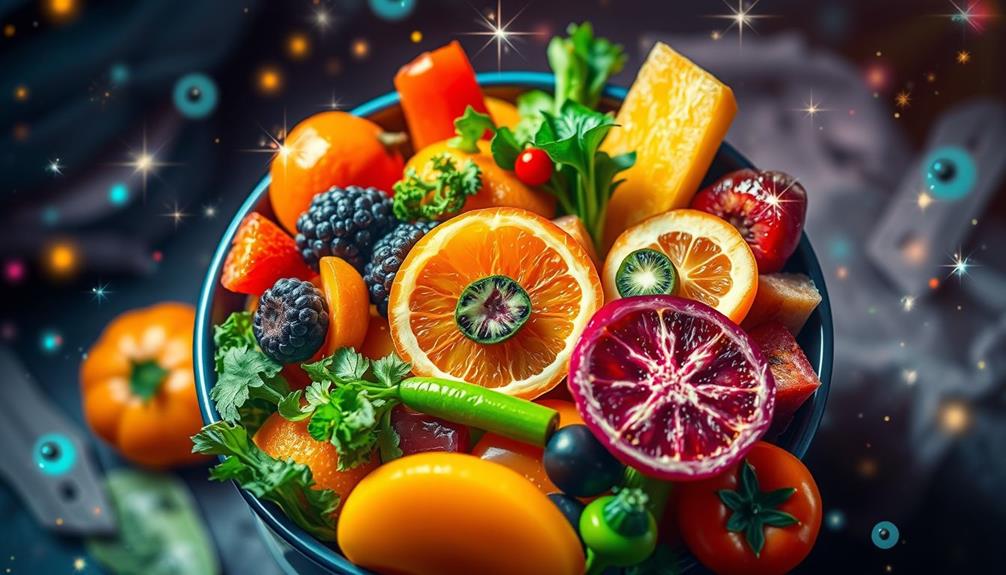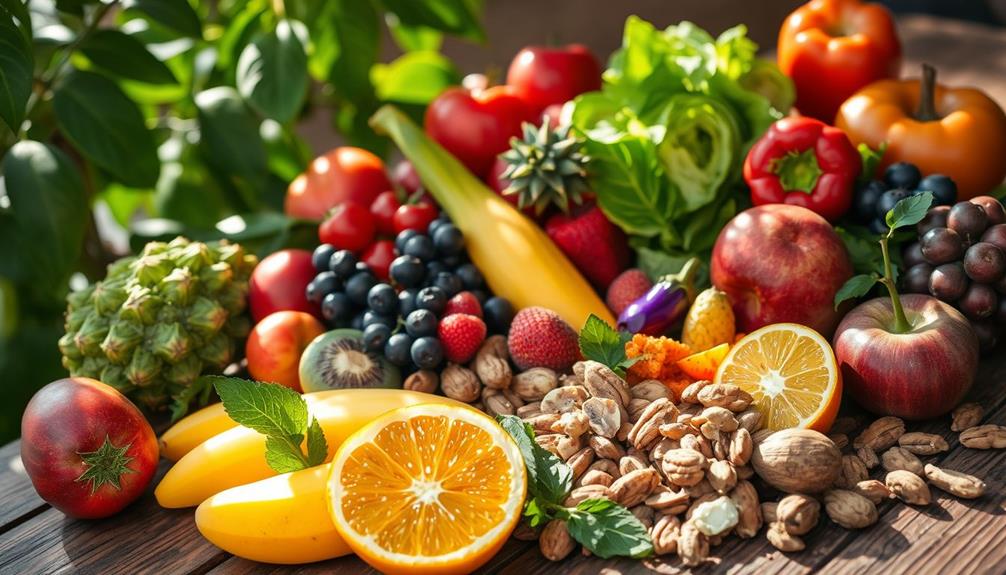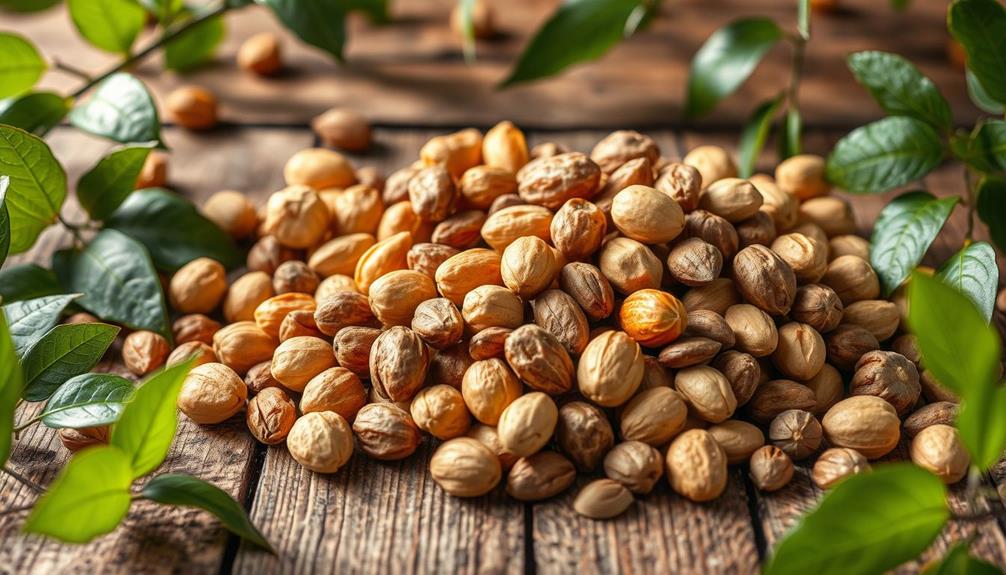Animals eat raw food instinctively, relying on their ancestors' diets. This unprocessed food provides essential vitamins and minerals that balance their nutritional needs. You'll find that raw diets enhance digestion and can reduce issues like bloating. However, it's vital to acknowledge the risks, as raw food can harbor harmful bacteria. To keep your pets safe, focus on sourcing high-quality ingredients and practicing proper food handling. By understanding how to safely integrate raw foods into their diet, you can support their health and well-being. There's much more to explore about raw diets and their impact on animal health.
Key Takeaways
- Animals naturally consume raw food, aligning with their ancestral diets that promote better nutrient absorption and digestive health.
- Raw meat provides essential vitamins and minerals, crucial for overall health and well-being in pets.
- Many pets thrive on raw diets, which can improve digestion, especially for those with sensitive gastrointestinal tracts.
- Safe handling practices, such as thorough handwashing and surface disinfection, are vital when feeding raw diets to minimize health risks.
- Cultural traditions highlight the benefits of raw foods, with various populations consuming raw meats for natural nutrition.
Overview of Raw Food Diets
Have you ever wondered why more pet owners are turning to raw food diets for their furry friends? The growing trend towards raw meat-based diets reflects a desire for natural and organic feeding options.
With a 15% annual increase in sales, it's clear that many pet parents are interested in enhancing their pets' health and well-being. Studies show that about 15-25% of dogs and 10% of cats are now included in these diets, often incorporating raw eggs or meat without consulting their veterinarians.
Many owners are also exploring healthy dog snacks for happy pets to complement these raw diets, guaranteeing their pets receive a well-rounded nutrition plan healthy dog snacks.
Feeding raw food can involve two main approaches: home-prepared diets and commercial raw options. Home-prepared raw meat-based diets require careful balancing of essential nutrients like calcium, vitamins, and minerals to guarantee your pet's health.
On the other hand, commercial raw diets come in complete and balanced forms, using varied protein sources and often freeze-dried or dehydrated options to maintain nutritional quality.
The Menu Foods melamine contamination incident has heightened concerns about food safety, prompting many owners to explore raw food diets as safer alternatives.
As you evaluate these options, remember to prioritize your pet's immune systems and overall health when choosing their diets.
Nutritional Benefits for Animals

When considering the nutritional benefits of raw diets for animals, you'll discover a wealth of essential nutrients that can greatly enhance your pet's health.
Raw animal foods are packed with important vitamins like A, B6, B12, and D3, along with minerals such as heme iron and taurine, which are essential for the well-being of carnivorous animals. These nutrients support various bodily functions, including immune function, ensuring your pet stays vibrant and healthy.
Additionally, raw diets are rich in antioxidants, which can help combat oxidative stress in animals, similar to the benefits seen in cranberry juice consumption.
Furthermore, raw diets align with ancestral eating habits, allowing pets to thrive on the food their ancestors consumed. This natural diet promotes better nutrient absorption and digestive health, thanks to the beneficial enzymes retained in raw foods.
Without the fiber found in processed diets, raw meat can also aid digestion for animals with sensitive gastrointestinal tracts, reducing bloating and gas.
Health Risks and Concerns

While raw diets may offer numerous nutritional benefits, it's important to recognize the significant health risks they can pose. When you're feeding raw meat to your pets, you're potentially exposing them—and yourself—to harmful pathogens like Salmonella and Listeria.
Studies show that nearly 25% of raw food samples test positive for dangerous bacteria. Salmonella infections can lead to severe gastrointestinal symptoms in both pets and humans, with 1.2 million cases occurring annually in the U.S. alone, resulting in about 400 deaths. Individuals with compromised immune systems, much like those dealing with BPD dynamics in relationships, may face heightened risks.
Moreover, pets can be asymptomatic carriers of these bacteria, heightening the health risks, especially for young children and those with compromised immune systems. Listeriosis, linked to Listeria contamination, can result in hospitalization for over 90% of infected individuals, particularly affecting vulnerable populations like newborns and pregnant women.
Additionally, you should be wary of nutritional deficiencies in raw diets. An unbalanced intake can lead to serious health issues, including hypervitaminosis A and nutritional osteodystrophy.
As a pet owner, understanding these risks is crucial for making informed decisions about your furry friends' diets.
Cultural Perspectives on Raw Diets
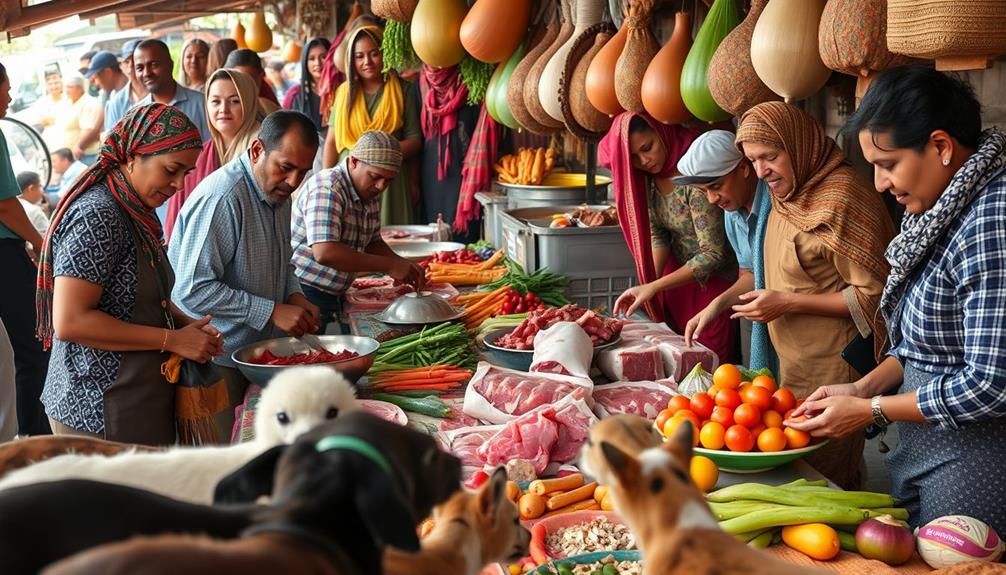
Exploring cultural perspectives on raw diets reveals a fascinating tapestry of traditions that celebrate the consumption of raw or lightly cooked meats. Many cultures, like the French with their beef tartare and the Italians with beef carpaccio, have long histories of integrating raw animal foods into their diets.
Indigenous diets, such as those of the Inuit and Maasai, feature raw foods like whale and fish or raw cow's blood, highlighting cultural practices that emphasize natural nutrition sources. The rich cultural heritage of various Indigenous communities reflects a deep connection to traditional food practices and the land that sustains them.
Historical studies by Dr. Weston A. Price show that healthy populations worldwide included raw animal foods alongside cooked options, contributing to their overall well-being. The consumption of raw foods is often shaped by cultural norms, with specific handling and preparation methods developed to address perceived safety risks.
Reconnecting with ancestral diets, which include raw animal foods, may provide modern health benefits, as these foods can retain enzymes and nutrients lost during cooking.
Safe Practices for Feeding Raw Food
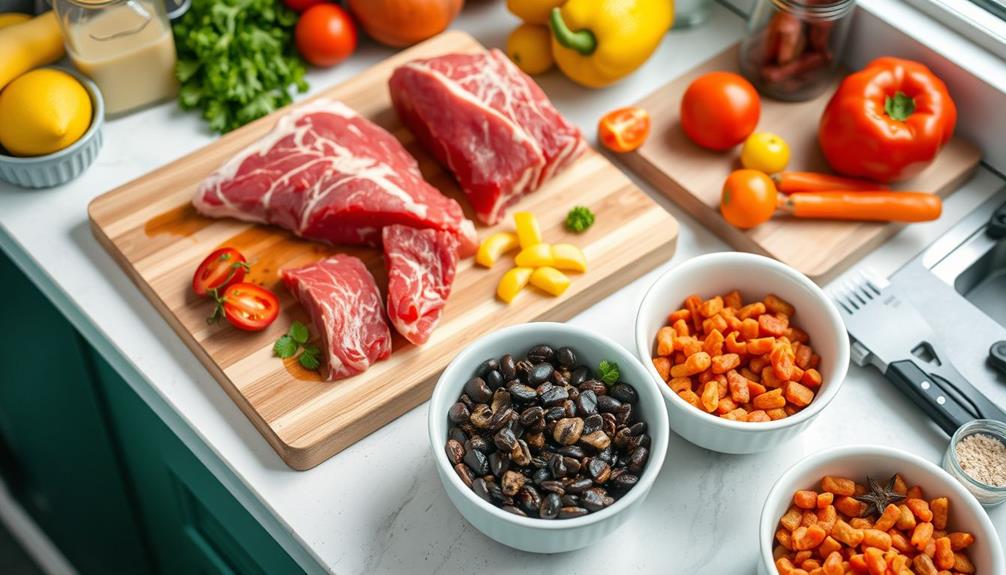
Feeding your pet a raw diet can offer several health benefits, including improved coat condition and increased energy levels, but it's crucial to prioritize safety to prevent any potential risks.
When you're handling raw food, always wash your hands thoroughly afterward to minimize the spread of harmful bacteria like Salmonella and Listeria monocytogenes. These pathogens can pose considerable health risks to both you and your pets.
For instance, proper diet guidelines for pets suggest verifying balanced nutrition with high-quality ingredients that meet their dietary needs, which can be found in Ultimate Hamster Care Guide.
Make sure to clean and disinfect surfaces that come into contact with raw meat, as standard cleaning methods often fall short in eliminating harmful pathogens.
Store raw food in the freezer until you're ready to use it, and always thaw it safely in the refrigerator or microwave to limit bacterial growth.
To avoid cross-contamination, keep raw food separate from other pet foods and use dedicated dishes and containers specifically for raw diets.
Cover any leftovers properly and adhere to strict hygiene practices during meal preparation.
By following these guidelines, you can greatly reduce the risk of foodborne illnesses associated with feeding raw meat to your pets.
Prioritizing safe storage and cleanliness guarantees your pet enjoys the benefits of a raw diet without unnecessary risks.
Frequently Asked Questions
How Do Animals Eat Raw Food?
When you observe animals eating raw food, you'll notice their strong stomach acids and specialized digestive systems. They efficiently break down nutrients, like Vitamin B12 and heme iron, which are essential for their health.
How Come Wild Animals Don't Get Sick Eating Raw Meat?
Did you know that 70% of wild carnivores thrive without frequent illness? Wild animals don't get sick from raw meat because their bodies have evolved strong defenses, allowing them to safely digest prey and combat harmful bacteria.
Why Do Vets Not Recommend Raw Diets?
Veterinarians don't recommend raw diets because of the risks of harmful bacteria and nutritional imbalances. They emphasize the importance of balanced, commercially prepared pet foods that meet safety standards to guarantee your pet's health.
What Is the Science Behind the Raw Meat Diet?
The science behind raw meat diets involves strong stomach acids that break down pathogens and digest protein efficiently. Despite nutritional benefits, you must be cautious of harmful bacteria and prioritize safe handling to minimize health risks.
Conclusion
In summary, feeding animals raw food can be akin to handing them a treasure map to ideal health, but it's essential to navigate carefully. Just like a chef balances flavors, you must consider the nutritional needs and potential risks. Remember, a recent study showed that dogs on a raw diet had an 80% increase in energy levels. By understanding their diets and practicing safe feeding, you can help your pets thrive, turning that map into a rewarding journey.


